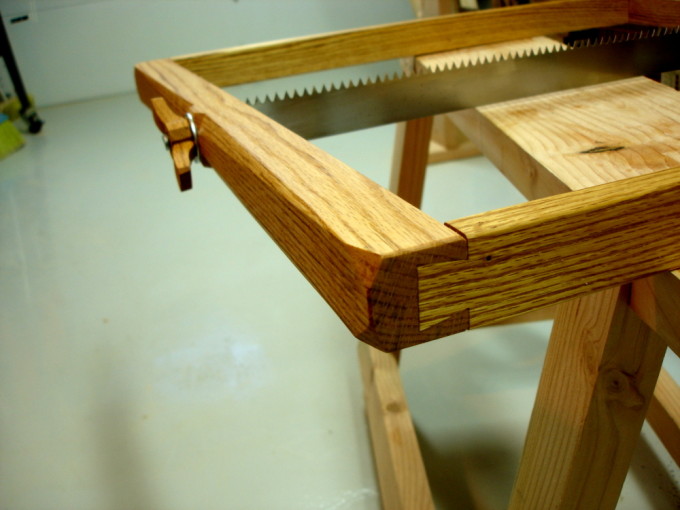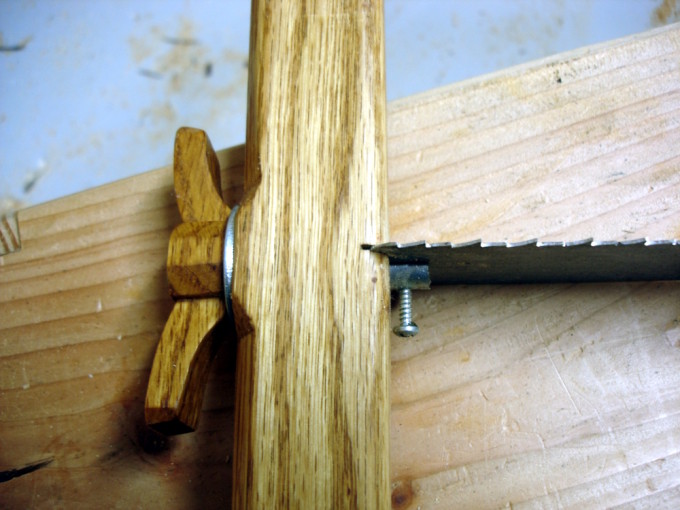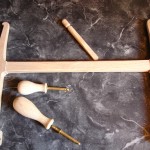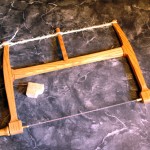A few new cedar flitches are acclimating themselves to the shop. In the meantime, I’ve been busy preparing a saw that will be used to get planking out of that cedar. This saw’s main work will be resawing, slicing thickness from roughly 4 quarters to pairs of roughly 2 quarters boards. Getting two boards from each flitch is the goal. Most people would use the bandsaw for this job, but mine is good for only 6 inches of resaw capacity, and some of these boards will be from 8 to 10 and 1/2 inches wide. I would rather have a good hand tool method than invest yet more in the band saw.
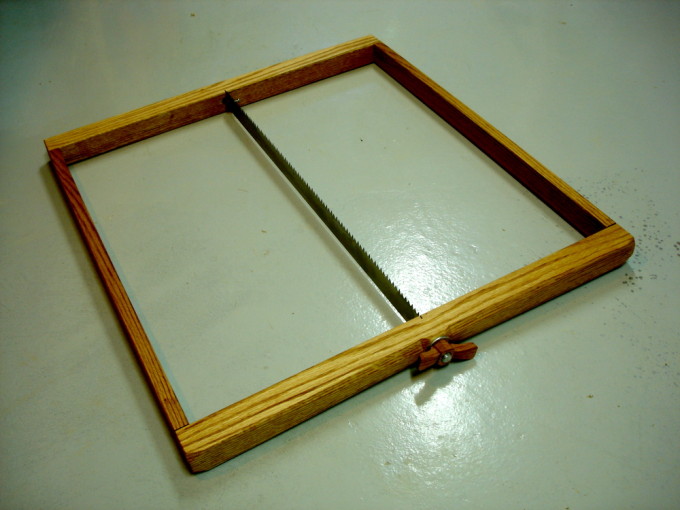
This frame saw derives from Josh Clark’s “Making a Frame Saw” article. I used red oak, 1 and 1/2 inch square, for the stretchers. The arms were gotten from a piece of the same oak, resawn to half thickness. The blade is also 1 and 1/2 inches wide. I found it at Frog Tool Company in Dixon Illinois. See the update at the end of the article.
As Josh suggested, I used half-blind dovetail joints. While I’m skeptical that the forces on the saw actually need this kind of joint, I saw it as opportunity to learn to do them. First time doing dovetails. I cut the tails on the arms first and did a couple of practice pockets on scrap wood. Then, did the real ones. Each one gets better, and yes, that’s the last one that’s shown in the picture. All are snug enough to require gentle tapping to assemble. No glue used so far. (Note from several years later: These joints are still not glued or screwed. The tension from the saw keeps them firm enough for constant use.)
All edges are chamfered, because I imagine I’ll spend quite a few hours using this saw. I’m an Art Deco fan, so the upper arm has a series of stop chamfers in an Art Deco motif, and a wing nut to match. The wing nut is simply a wooden shell covering a 3/4 inch metal nut.
The first cut, on a 7 inch wide board, shows the saw will indeed do the job well. Planing will be needed to smooth the cut surfaces, but that was expected. Now, all I need to do is figure out how to hold a workpiece that’s 16 feet long.
IMPORTANT NOTE: After using this saw for a couple of months, I came to dislike the blade. I acquired a good old Disston 26 inch saw, changed it from 7 TPI to 4 TPI, sharpened, and hacksawed to a 2 inch width. That replaced the original blade an made a huge improvement in how well the saw works.
